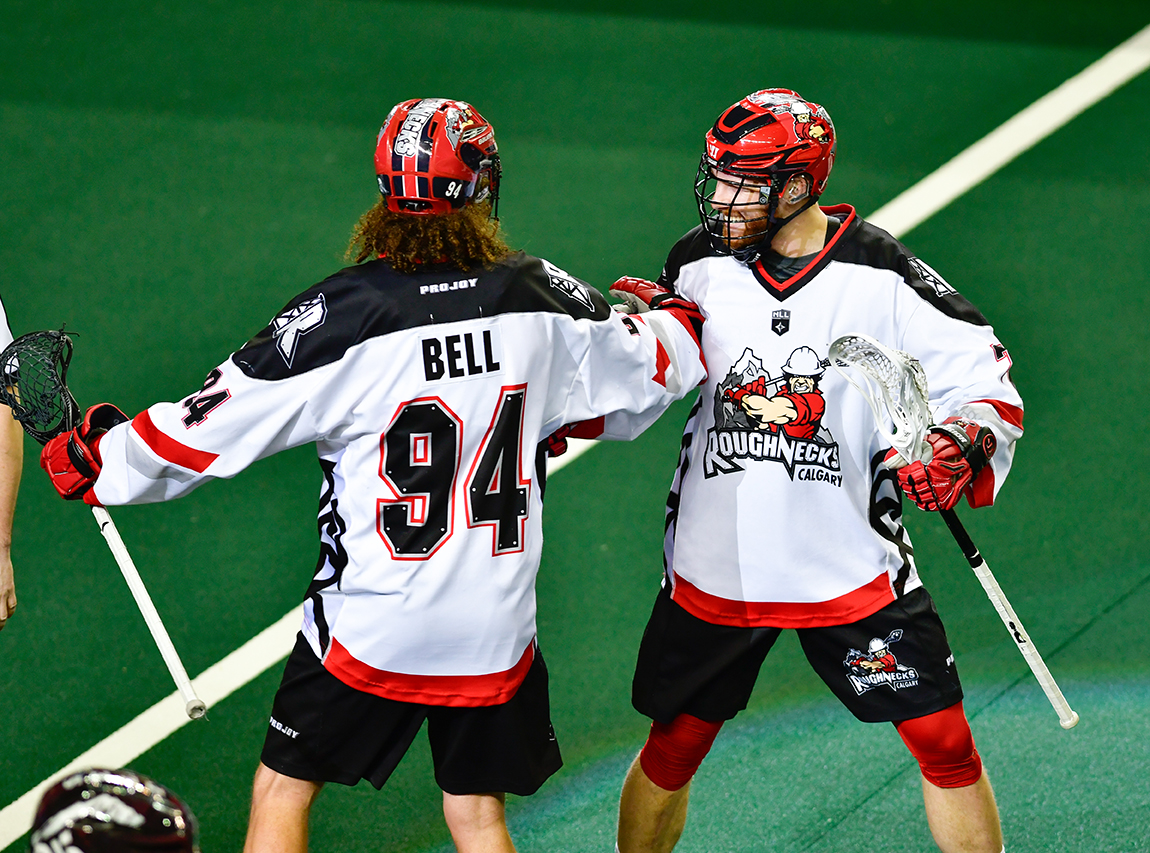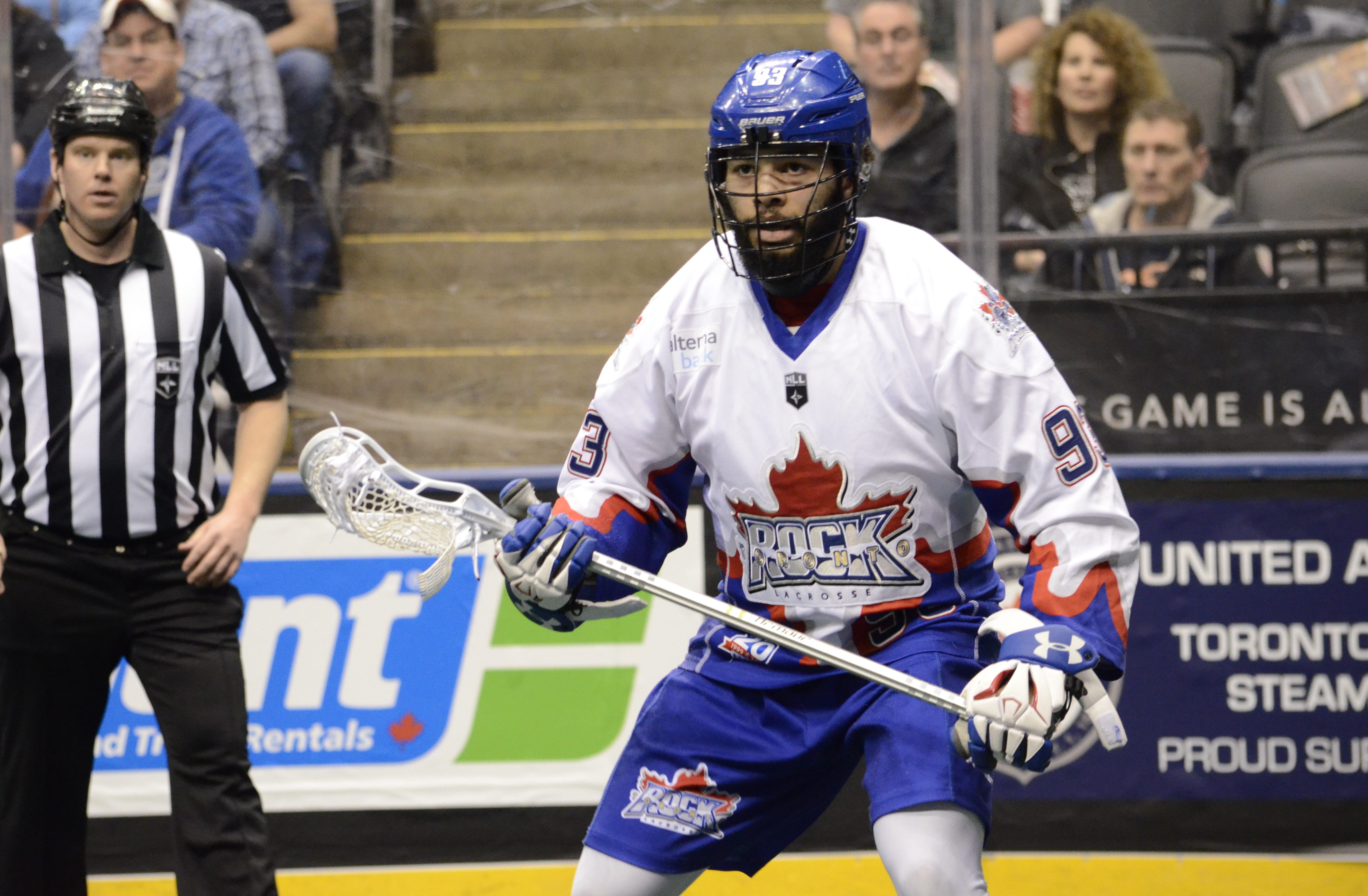Every team sport has a similar system. To the amateur fan, it’s just the neutral play, where no one quite has the advantage. But people that understand the game acknowledge that this is one of the most crucial areas of lacrosse. I’m talking about the transition game.
But why is transitional play so crucial in box lacrosse? What makes transition players so critical to a team’s long-term success? What even makes a good transition player? The answers are not as daunting as one might think.
For those of you who are new to this topic, transition usually starts from the defensive zone but is ultimately a two-way execution. Usually a loose-ball or a turnover caused by the defense will organically start the team’s transition. There are many unrefined aspects of transitional play but here are a few key success factors to start us off:

Always move the ball away from the bench side of the floor
The first reason – which becomes obvious to you almost immediately as a player – is the traffic from the offense and defense changing on that side of the floor. The number of coaches I’ve witnessed seething and turning red when a transition player gets bumped off the ball or has a pass intercepted because they tried running through the bench side is crazy. Remember when you were nine-years-old and your coach told you to move to open space? The same rule still applies here. Run to the open space and get the ball to the offense. Or, if you’re good enough, run the ball through open space and score a goal with the offense.
Stretch the floor
I started playing lacrosse at age 20. That’s right, my last year of junior eligibility! I wasn’t very good as I’m sure you can imagine, but I was fast and I wasn’t afraid to fight, so the coach gave me a shot as a transition guy. Before the game he would say: “Ry… Peterborough two-man swing on transition!” My immediate thought was “Coach we’re playing Whitby… what the hell are you talking about?!” Luckily for me I finally realized what that was and how much easier it made my job.
The gist of the ‘two-man swing’ is that it speeds up the breakout and gets the ball into the offensive zone almost immediately. Why, you ask? Because the goalie and players involved in executing a successful transition are covering half of the floor immediately.
The Peterborough two-man swing is where the goalie moves the ball from the crease into the corner or up the half-wall to the first transition player (usually the crease-defenseman) moving up the floor. The shooter-defenseman playing the same side of the floor (away from the bench) or the first offensive player out the door cuts over to the far side to give an outlet for his teammate with the ball. Within seconds, two players have moved the ball up the floor and into the offensive zone.
So what can we learn from this? Spread out and work smart!
Have a nose for the net
There is nothing worse to an opponent than when a defensive player scores a goal. It’s so gratifying to see the look on someone’s face when they know you weren’t the one who was supposed to score. Jeff Shattler was the one who taught me how to become even a minute offensive threat from transition. I rarely join the offensive rush, but when we are changing from defense to offense and the changes are slow on both benches, I will barrel down the floor to the cage. Taking an arching route to the crease opens the floor, creates panic amongst the defense and provides a quick passing option. Luckily for me my teammates are so good I just put my stick up by my ear without looking and they are able to put the ball in my stick, “tape-to-tape”. Even if I don’t get the ball, I draw enough attention from defenders to open up the floor for my teammates. And you better believe they’re starting to pay more attention to me doing that then the true offensive threats on the floor. Go ahead and fill the net, boys! After this, however, I advise you to run twice as hard back to the bench before your coach loses it.
Communication
I played my first few MSL games last summer and really didn’t know what to expect. Seven-year lacrosse player who has never played higher than junior and senior B? What the hell was I doing there? I walked into Peterborough Memorial Centre like a little kid. Nervous as hell, excited, anxious, terrified, and ecstatic all at the same time. I thought “man, who is going to shut down Evans and Dickson tonight?” Shortly after having that thought and meeting my new coach, I learned that I was going to be one of the main guys ‘shutting down’ two of the most formidable lacrosse players to grace the earth. I think I had a mini panic attack in the tunnel before I ran out for warm-ups.
The one thing that was most noticeable about Evans and Dickson, as well as the guys on the back door with me is how much communication was being exchanged. It literally propelled them to a different level of play. How do the best players in the world get better? One of the answers is constant communication! If you learn nothing else from reading this, learn that communication is one of the biggest success factors in almost any team sport.
From a transitional perspective, know who is going to be transitioning the ball when you are running into your defensive set. If the goalie stops a shot, your crease man should be letting him know how much time he has to get set while the far-side transition player is yelling for an outlet. Listen to the bench: everyone – and I mean everyone – will be trying to help you navigate the floor. The second transition player already up at half (remember that two-man swing?) should be yelling for an outlet pass if the initial runner is under heavy pressure or letting him know he should keep running the ball down the floor. This is going to make everyone a better player moving from the back door to an offensive set. There… now you have a degree in communications.

These are the attributes of transition lacrosse that help teams win championships. It’s not rocket science by any means but it can sometimes slip away in the course of stressful games. Keep the above four things in mind when the ball lands in your stick in your zone and you will help convert more goals.
Now we know why and how transition helps a team become more successful. But what makes a great “tranny” player? There are some players in the NLL that make it look easy and if you’re looking to be a better lacrosse player, you should be watching them. Here are two of the best:
Tyson Bell, Calgary Roughnecks
Tyson has a great mix of talent. He is fast and takes off like a lightning bolt out of the defensive end. His speed gives teams little to no time to adapt to him being on the floor. Beyond that, he can put the ball in the net. Having the offensive skills he does makes him much more threatening than just your average speedster on the back door. Now you may think ‘Ryan, this guy is a stud! How the hell do you expect me to get to that level?’ Simple! Tyson’s fundamentals are iron-clad. He does the little things right and has great discipline. If you can be aware of your positioning on the floor, identify beneficial match-ups and make yourself available for the ball, you can achieve his level of transition. Having said that, I have a feeling most of the magic comes from that flow under his bucket.
Jeremy Thompson, Saskatchewan Rush
It doesn’t take an expert to realize how fast Jeremy is. Throw on one of his highlights from when he was at ‘Cuse and you will audibly say ‘Whoa!!’ There is no surprise that this has transitioned (no pun intended) into his box repertoire as Saskatchewan continues to win NLL titles. The only defensive-oriented player from the Thompson clan, speed is the name of JT’s game. He moves the ball up the floor on his own and he does it at the speed of light. His offensive teammates and coaches love this as it maximizes their time on the shot clock creating more offensive opportunities. Watch out for Jeremy next time you’re in Six Nations watching the Chiefs or in Saskatchewan watching the Rush. You’ll see exactly what I mean and why his presence as a tranny plays such a major role in his teams’ success. After all, he is a NIKE-sponsored athlete for a reason.

So there it is. Transition finally makes it into the limelight even if for a brief moment. Speed, communication, positioning and opportunity are the core of what makes a solid transition at any level of the game. YouTube is always a great resource if you’re looking for film and pointers. Remember that even some of the best offensive players in the NLL started off playing transition (i.e. Dhane Smith), but that’s a story for another post. Until then, play for those hits, fights and red lights… I’m off to hit the wall.

